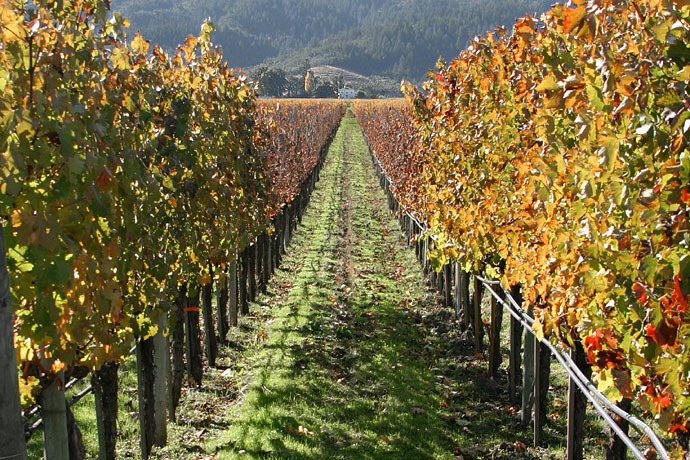California winemakers could now be facing the loss of up to 50% of the land suitable for winegrowing, according to a June Environmental Research Letters report (found via Treehugger). The land isn’t going anywhere, but growing wine grapes for premium wines requires a very particular set of circumstances, related to the place where it is grown, known as terroir, and climate change would endanger that.

Terroir, loosely translated as “sense of place,” has to do with all of the elements that go into where grapes are grown, including the microclimate, soil type, topography, and depending on who you ask, even the plants grown nearby, which all affect the taste of the wine. But no one debates that the climate is an important factor, and if climate change takes place at the rate it is expected to, caused by a 23% rise in greenhouse gases, delicate Napa Valley may see a temperature increase of up to 2 degrees Farenheit. This change will adversely affect grapes used to make premium wines such as Pinot Noir and Cabernet Sauvingon, which are currently being grown in near-optimal conditions. The expected 2-degree change would push the number of over-95-degree days well over 30, which is believed to be the grapes’ limit. The study also predicts loss of ideal wine-growing land in Oregon and Washington due to temperature change, though to a lesser extent.
Wine is a good indicator species of how climate change could affect agriculture, because it is a very sensitive crop. Small variations in growing conditions adversely affect the final product, and, unlike annual plants like tomatoes or wheat, you can’t just pick up a grapevine and plant it somewhere else from year to year. Wine growing regions in other countries may likewise be affected, and as I drove yesterday through Chile’s Colchagua valley, I wondered how sensitive the grapes (and olives and avocadoes) here, and in parallel valleys all over the world, will be to the coming greenhouse gas-fueled temperature changes.